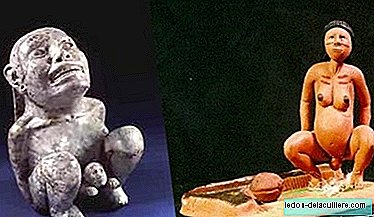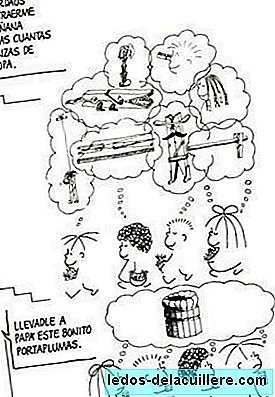
A few days ago we told you how the birth is being reintroduced vertically in Mexican hospitals, thanks to special obstetric beds that allow, more or less comfortably, this position for delivery.
But as we have said on many occasions, vertical or squatting births are nothing new, and today we want to bring you some samples of vertical births in pre-Columbian art which shows how that was the natural way of giving birth a few centuries ago.
Everything, before complex stretchers were invented. Although it is also true that the question of "accommodating" women through various objects leaves samples in the European area of medieval beds and tables.
The Andean, Mayan, Aztec cultures ... show that the gestures and attitudes of goddesses who stop vertically are a reflection of women's practices and traditions regarding childbirth, while representing a female archetype creator of life and culture.
- The first image, top left, corresponds to the Aztec goddess Tlazolteotl. In Mesoamerica, the Aztecs sculpted this beautiful sculpture of Tlazoltéotl (the moon goddess of the fertile land, patron of eroticism, childbirth and destiny) standing naked squatting, hands on her buttocks and mouth open showing teeth and screaming while A baby emerges down and looking forward between her legs. Tlazolteotl rests its feet on a few inches of heels, raising the heels to stabilize the posture.
- The second image, next to the previous one, corresponds to a Pachamama or "Mamá Pacha", "Mother Earth", goddess of indigenous Andean peoples. The goddess also appears squatting, with the moon, the sun and the stars painted on her face. This figure was unearthed in Villa Las Rosas, city of Salta (Argentina).

- On these lines to the left we have another representation of the goddess Pachamama corresponding to the Quechua culture, this time a painting. This is another of the many images that represent the well-known pre-Columbian vertical birth as and the sacred power of Goddess Earth.
- To his right, an engraving on stone found at the archaeological site of Monte Albán (Oaxaca, Mexico) that also represents a vertical birth. It is part of "The Gallery of the dancers", a set of glyphs that represent different dancing figures (naked warriors, childbirth, sick ...).
These and many other samples confirm that in the times of our ancestors it was common for women to give birth naturally in vertical positions (kneeling, squatting or sitting), something that continues to occur in the current indigenous and peasant cultures in different parts of the planet.
WHO points out that from any area in which women give birth, the position that is most comfortable for them should be favored.
We see how the pre-Columbian goddesses decided to give birth, in an upright position. Maybe in a few decades we will see that hospitals begin to relegate the delivery tables as we know them today to give way to greater options.












